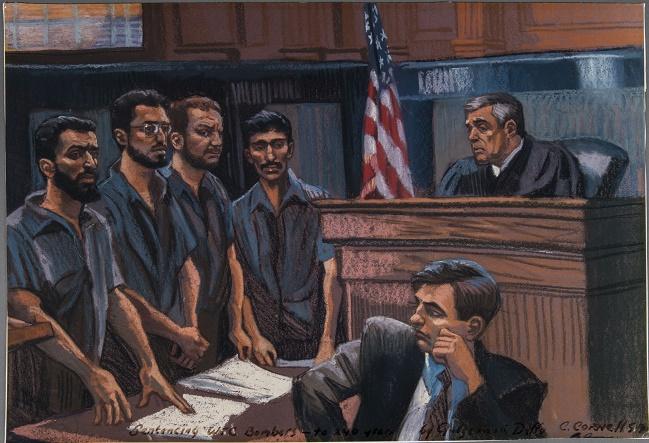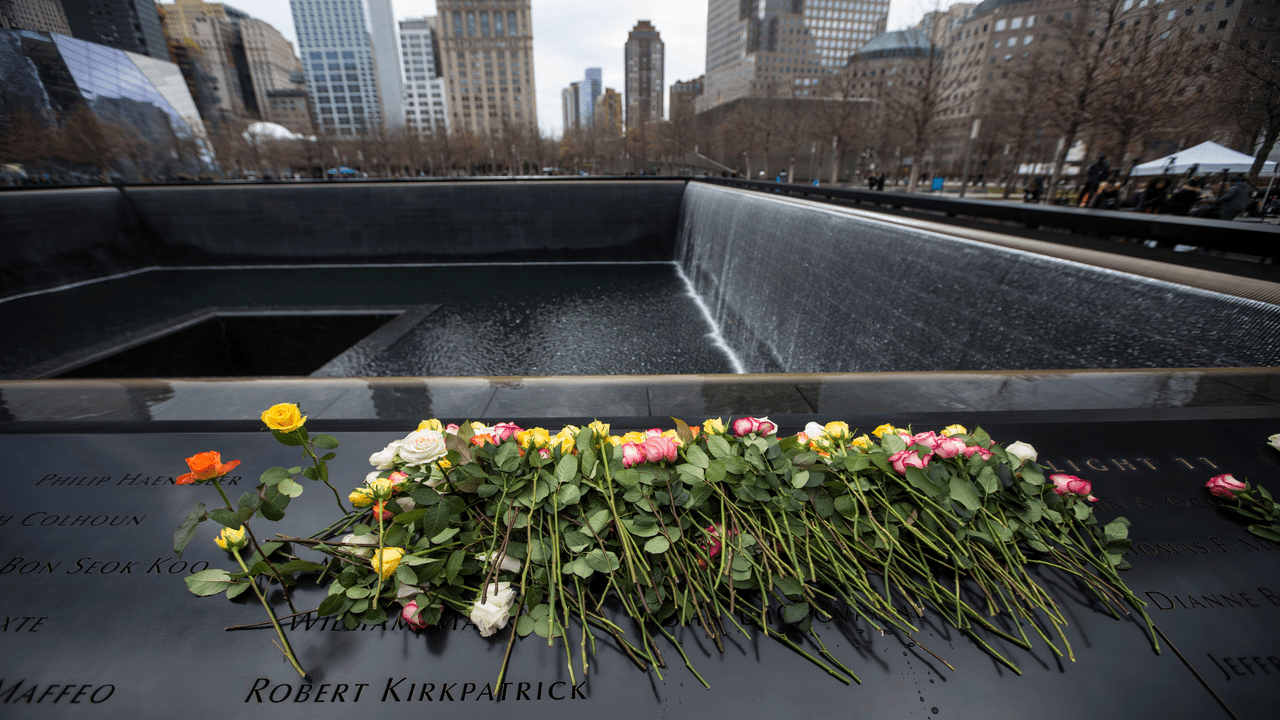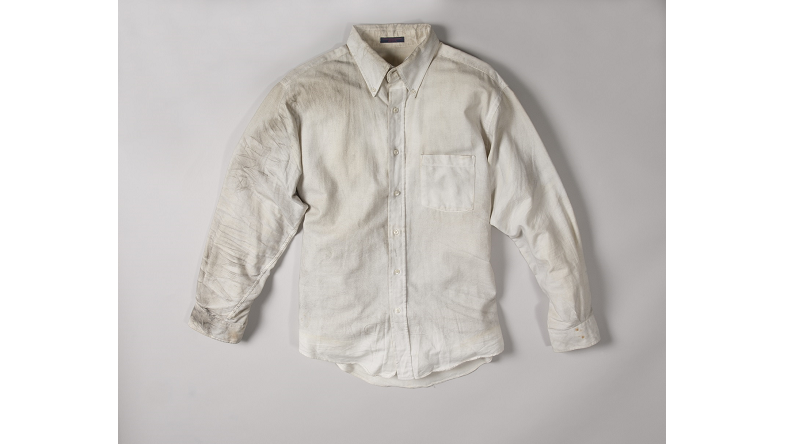Make a donation to the museum
Putting Together the Fragments: The Investigation of the 1993 World Trade Center Bombing
Putting Together the Fragments: The Investigation of the 1993 World Trade Center Bombing

On February 26, 1993, a van loaded with a 1,200-pound urea nitrate bomb headed for downtown Manhattan. The destination was the World Trade Center, and the mission was to destroy the Twin Towers. The group of terrorists led by Ramzi Yousef drove their bomb-filled vehicle into the public parking garage below the towers. They parked on the B-2 level of the garage, lit the bomb’s fuse, and escaped in a getaway car.
At 12:18 p.m. on that cold day in February, the bomb detonated. The explosion left a hole 150 feet wide and several stories deep underneath the North Tower. People on the top floors of the towers and in surrounding buildings could feel the force of the explosion. While the terrorists’ mission to destroy the towers failed, six people were killed in the attack, and thousands were injured.
Within minutes of the bombing, Joint Terrorism Task Force (JTTF) investigators suspected an act of terrorism. Two days after the attack, investigators recovered several vehicle fragments from the parking garage of the World Trade Center site. Unlike the other fragments they found, these pieces indicated that they were from a vehicle that had exploded outward. Two of these pieces included a vehicle identification number (VIN), a unique code given to every car and truck sold in the United States. The vehicle, a Ryder van, was traced by the FBI to a rental agency in Jersey City, New Jersey, and from this bit of information, the investigators learned the name of the man who rented the van, Mohammed Salameh. Seeking a refund for his $400 deposit, Salameh had reported it stolen on the afternoon of February 26.
That evening of the attack, two of the bombers, Rami Yousef and Eyad Ismoil, fled the country using fake passports and left their other conspirators behind.
Working with the rental-office personnel, Salameh was arrested on March 4, 1993. The FBI searched his apartment and the information obtained led to the arrests of three co-conspirators: Ahmad Ajaj, Nidal Ayyad, and Mahmoud Abouhalima. The FBI also interviewed another suspect, Abdul Yasin, before releasing him due to a lack of evidence. Yasin fled to Jordan; he was later indicted but still has not been captured.
On March 5, after receiving a tip from an employee, the FBI searched a self-storage unit in Jersey City. Agents discovered chemicals that could be used to manufacture explosives, including urea, nitric acid, and sulfuric acid. The chemicals matched evidence from the World Trade Center bombing site. That same day, The New York Times received a letter taking responsibility for the bombing on behalf of a group calling itself the Liberation Army, Fifth Battalion. After Nidal Ayyad, one of the conspirators, was arrested on March 10, the FBI matched his DNA to traces of saliva found on the letter’s envelope. An FBI specialist later recovered a document from Ayyad’s work computer that referenced the letter received by The New York Times.
Seven months later, following the reopening of the Twin Towers and Ramzi Yousef’s addition to the FBI’s Most Wanted List on April 21, 1993, the United States began its trial against the four perpetrators of the World Trade Center bombing in custody. More than 200 witnesses were called to testify during the trial, which took place before Judge Kevin T. Duffy in the U.S. District Court for the Southern District of New York.
The trial concluded on March 4, 1994. The four defendants were found guilty on all counts. On May 24, 1994, Judge Duffy sentenced each of them to 240 years in prison, factoring in the combined life expectancies of the six people killed in the bombing.
Ramzi Yousef remained at large until he was captured in Pakistan on February 5, 1995, for planting a bomb on Philippine Airlines Flight 434, which killed one passenger and injured 10 others. He was extradited to New York. When the helicopter transporting Yousef flew past the World Trade Center on February 8, 1995, an FBI agent reminded Yousef that the towers were still standing. Yousef responded that “they would not be if [he] had had enough money.”
Yousef entered a plea of not guilty as he faced two separate trials: one for his involvement in the 1993 World Trade Center attack and another for the Bojinka plot. The jury found Yousef and Eyad Ismoil guilty for their involvement in the 1993 World Trade Center bombing. Another jury found Ramzi Yousef and his co-conspirators, Abdul Hakim Murad and Wali Khan Amin Shah, guilty of conspiracy for the Bojinka plot. On January 8, 1998, Judge Duffy sentenced Yousef in both trials to life in prison plus 240 years, factoring in the combined life expectancies of the six people killed in the 1993 bombing.
Five of the six convicted World Trade Center bombers are still serving their sentences at a maximum-security prison in Colorado, while the sixth, Nidal Ayyad, serves in Indiana. The U.S. government considers the bombing an open case because the seventh alleged conspirator, Abdul Yasin, who fled the United States in March 1993, remains at large.
By 9/11 Memorial Staff
Previous Post
Remembering the Six People Killed in the First World Trade Center Attack

As we prepare to mark the 28th anniversary of the first attack on the World Trade Center that took place on February 26, 1993, with a commemorative ceremony and a virtual tour, we take a moment to remember the six people killed in the first terror attack on the Twin Towers.
Next Post
Smoke-Stained Dress Shirt Shows the Perilous Conditions of 1993 WTC Evacuation

More than 1,000 people were injured on February 26, 1993, most suffering from smoke inhalation. When Walter Travers finally returned home that cold February evening, exhausted, he shed his gray, smoke-stained white button-down shirt.